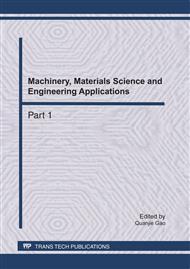p.408
p.412
p.416
p.422
p.427
p.433
p.439
p.447
p.453
Lap Joint Properties of FSBRed Dissimilar Metals AZ31 Mg Alloy and DP600 High-Strength Steel with Various Parameters
Abstract:
The Friction stir blind riveting (FSBR) process consists of a blind rivet is driven at high rotational speed and brought into contact with the workpieces, thereby generating frictional heat between the rivet and the workpiece, which softens the workpiece material and enables the rivet to be driven into the workpieces under reduced force. The riveting of lap joint of AZ31B(3mm) magnesium alloys plate and a DP600 (1mm) high strength steel plate was produced by FSBR using 2200rpm rotation speed, various feet rates and different lap mode to investigate the effects of the joint morphology and strength. The joint strength depended strongly on the shank of rivet itself shear strength,however in which case the strength of joint impacted by rivet assembly quality (the lap of plates, the tightness rivet of workpiece). So positioning the steel sheet on the top is desirable, the maximum shear strength of the joint reached about 6.0KN.
Info:
Periodical:
Pages:
427-432
Citation:
Online since:
April 2011
Authors:
Price:
Сopyright:
© 2011 Trans Tech Publications Ltd. All Rights Reserved
Share:
Citation:


